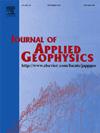利用电阻率法探测古代地下遗迹——以中国商丘为例
IF 2.1
3区 地球科学
Q2 GEOSCIENCES, MULTIDISCIPLINARY
引用次数: 0
摘要
商丘被认为是前代和代商文化的中心,拥有丰富的历史遗产,在中国引起了极大的关注。在商丘挖掘古代地下遗迹为考古学家提供了对中国古代历史和文化的宝贵见解。在这项研究中,通过电阻率测量对商丘考古发掘坑周围潜在的古代遗迹进行了调查。由于场地的限制,在考古挖掘坑周围只获得了两条近似垂直的二维测量线。为了提高解释的可靠性,我们比较了二维反演、有限记忆准牛顿(L-BFGS)方法三维反演和基于广义学习(BL)的三维反演。二维反演结果对古城墙进行了刻画,但对古建筑构件的刻画不足。此外,由于考古挖掘坑的影响,在较深的区域会产生假异常。利用L-BFGS法或BL网获得的三维反演结果,可以描绘出测线下方的古城墙和建筑构件。与利用L-BFGS方法获得的三维反演结果相比,BL反演结果在古建筑构件区域显示出更大的异常范围。考古发掘证实,BL反演结果更能反映地下实际情况。此外,夯土古城墙的面积对应着较低的氡气值。该研究为考古发掘的决策者提供了有价值的见解,所提出的处理技术有助于电阻率法在考古勘探中的实际应用。本文章由计算机程序翻译,如有差异,请以英文原文为准。
Exploring ancient underground remains using the electrical resistivity method: A case study in Shangqiu, China
Shangqiu, regarded as the center of predynastic and dynastic Shang cultures, possesses a rich historical legacy and attracts significant attention in China. Excavating ancient underground remains in Shangqiu offers archaeologists valuable insights into ancient Chinese history and culture. In this study, electrical resistivity surveys were conducted to investigate potential ancient remains around an archaeological excavation pit in Shangqiu. Due to site constraints, only two approximately perpendicular 2-D survey lines were acquired around the archaeological excavation pit. To improve the reliability of interpretation, we compared 2-D inversion, 3-D inversion using the limited memory quasi-Newton (L-BFGS) method, and 3-D inversion based on broad learning (BL). The 2-D inversion results characterize the ancient city wall but fail to depict the ancient building components. In addition, false anomalies are produced in the deeper regions due to the influence of the archaeological excavation pit. The 3-D inversion results obtained using the L-BFGS method or the BL network depict the ancient city wall and building components beneath the survey lines. Compared to the 3-D inversion results obtained using the L-BFGS method, the BL inversion results reveal a broader anomaly range in the area of the ancient building components. Archaeological excavations confirm that the BL inversion results more closely reflect the actual subsurface conditions. Additionally, the area of the rammed-earth ancient city wall corresponds to lower radon gas values. This study provides valuable insights for decision-makers in archaeological excavations, and the proposed processing technology is helpful for the practical application of the electrical resistivity method in archaeological exploration.
求助全文
通过发布文献求助,成功后即可免费获取论文全文。
去求助
来源期刊

Journal of Applied Geophysics
地学-地球科学综合
CiteScore
3.60
自引率
10.00%
发文量
274
审稿时长
4 months
期刊介绍:
The Journal of Applied Geophysics with its key objective of responding to pertinent and timely needs, places particular emphasis on methodological developments and innovative applications of geophysical techniques for addressing environmental, engineering, and hydrological problems. Related topical research in exploration geophysics and in soil and rock physics is also covered by the Journal of Applied Geophysics.
 求助内容:
求助内容: 应助结果提醒方式:
应助结果提醒方式:


